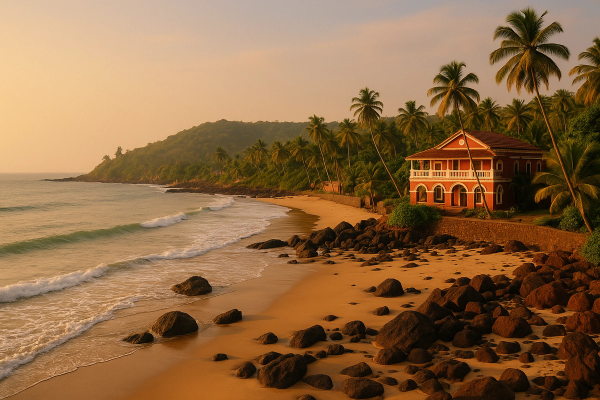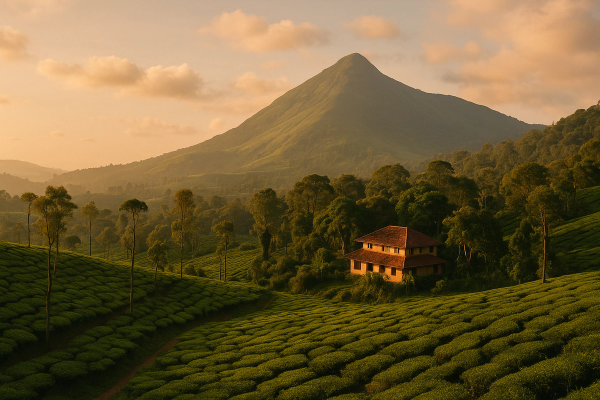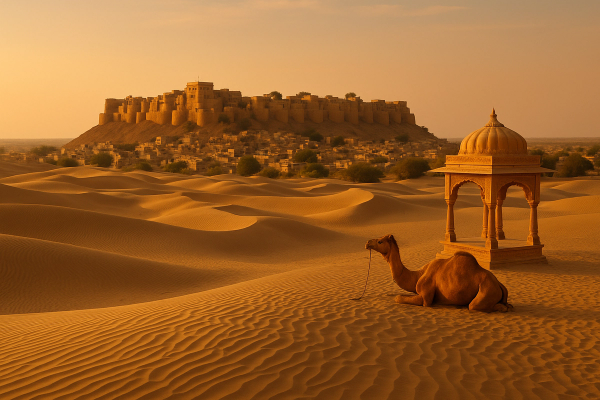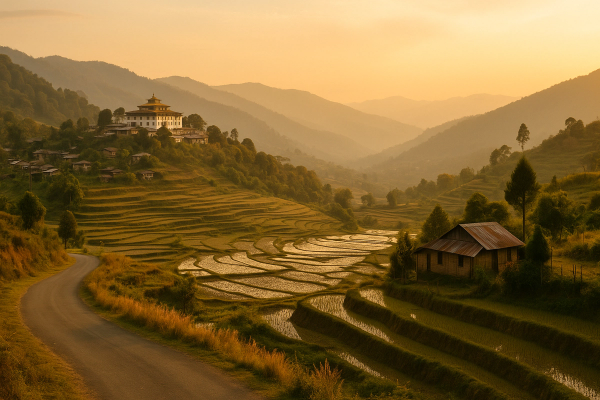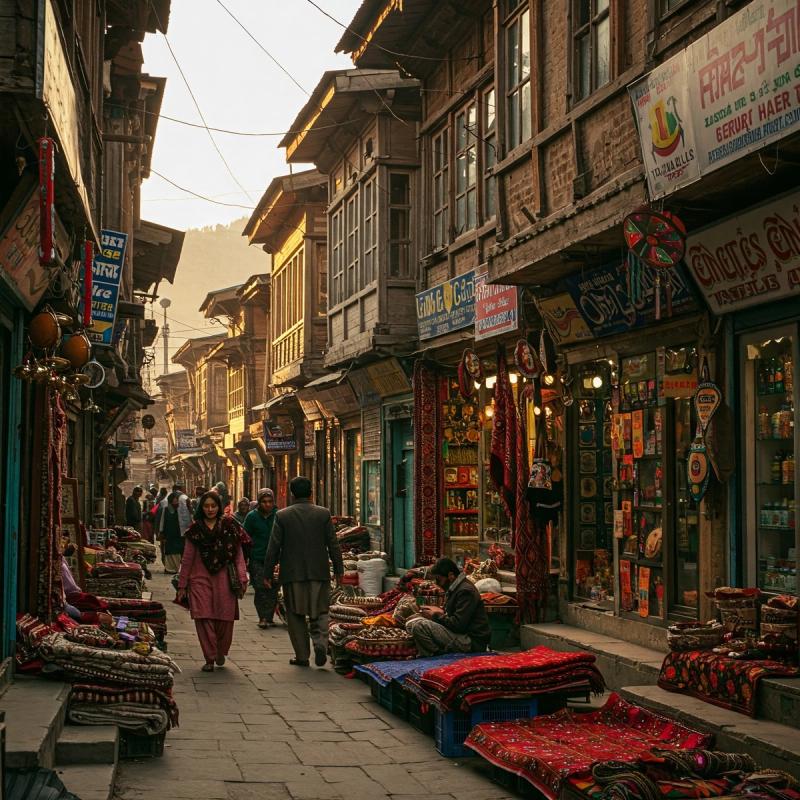
Unlock Paradise on a Shoestring: Your Ultimate Kashmir Budget Travel Guide#
Imagine waking up to the sight of mist-kissed mountains reflecting in a serene lake, the air crisp and clean, the scent of pine mingling with spices from a nearby kitchen. This is Kashmir, India – often called 'Paradise on Earth'. But does paradise have to break the bank? Absolutely not! Many travelers dream of Kashmir's legendary beauty but hesitate, thinking it's an expensive destination. I'm here to tell you, from one traveler to another, that experiencing the magic of the Kashmir Valley affordably is entirely possible. This kashmir budget travel guide is packed with affordable tips for India's crown jewel, specifically designed for budget travel enthusiasts, backpackers, and solo travelers.¶
Forget overpriced packages and tourist traps. We're diving deep into cost-saving tips on guesthouses/homestays, local eateries, shared taxis/buses, and crucially, how to avoid peak season surcharges. Get ready to explore stunning landscapes, immerse yourself in rich culture, and create unforgettable memories without emptying your wallet.¶
Why Kashmir? A Glimpse into the Valley#
Nestled in the Himalayas, the Kashmir Valley is a realm of breathtaking natural beauty. Think emerald valleys cradled by snow-dusted peaks, glistening rivers carving through the land, and lakes so tranquil they mirror the heavens. Srinagar, the summer capital, with its iconic Dal Lake and intricate Mughal Gardens, is often the gateway. Beyond lie destinations like Pahalgam (Valley of Shepherds), Gulmarg (Meadow of Flowers, famous for skiing), and Sonamarg (Meadow of Gold).¶
But Kashmir is more than just scenery. It's a tapestry of cultures, predominantly Muslim, with unique traditions, intricate handicrafts (Pashmina, carpets, woodwork), and a distinct, flavorful cuisine called Wazwan. The warmth and hospitality of the Kashmiri people, despite the region's complex history, often leave the deepest impression on visitors.¶
Finding Your Perfect (and Affordable) Time to Visit Kashmir#
Timing is everything, especially when traveling on a budget. Kashmir experiences distinct seasons, each offering a different vibe and price point.¶
Spring (April - Early June): The Valley in Bloom#
For many, including myself, this is a fantastic time. The harshness of winter recedes, tulips bloom (especially at Srinagar's Tulip Garden, usually April), and the valleys turn lush green. Weather is pleasant, perfect for sightseeing.¶
- Pro: Moderate temperatures (10°C - 25°C), beautiful scenery, fewer crowds than peak summer.
- Con: Occasional rain showers, some higher passes might still be opening up.
Budget Tip: Accommodation prices are generally lower than peak summer. It's a sweet spot before the main rush.
Summer (Late June - August): Peak Season Buzz#
This is the main tourist season, coinciding with Indian school holidays. The weather is warm, sometimes hot in Srinagar, and all areas are accessible. It's prime time for trekking and exploring higher altitudes.¶
- Pro: Best weather for high-altitude treks, all roads and attractions open.
- Con: Largest crowds, highest prices for flights and accommodation (peak season surcharges are common), can feel crowded in popular spots.
Budget Strategy: If you must travel in summer, book flights and accommodation well in advance. Opt for guesthouses slightly away from the main tourist hubs.¶
Autumn (September - October): Golden Hues & Calm#
My personal favourite! The landscape transforms into stunning shades of gold, red, and orange as the Chinar trees turn. The air is crisp, the skies are often clear, and the summer crowds have dispersed.¶
- Pro: Gorgeous scenery, pleasant cool weather (5°C - 20°C), significantly fewer tourists, prices drop.
- Con: Nights get chilly, requires warmer clothing. Some higher altitude activities might start winding down by late October.
Budget Gold: Autumn is arguably the best time for budget travelers seeking beauty without the crowds and inflated costs.
Winter (November - March): Snowy Wonderland (with Caveats)#
Kashmir turns into a winter wonderland, especially in places like Gulmarg, famous for skiing. Srinagar sees snowfall too, offering a unique, serene beauty. However, budget travel becomes more challenging.¶
- Pro: Snow activities (skiing in Gulmarg), incredibly picturesque landscapes.
- Con: Many roads (especially to Pahalgam/Sonamarg) can be blocked, extreme cold, heating costs can increase guesthouse prices, power outages more common, fewer transport options to remote areas.
Budget Consideration: While flights might be cheaper, internal travel and heating costs can add up. Best for those specifically seeking snow/skiing, less ideal for general budget exploration.¶
Getting to Kashmir & Navigating the Valley Affordably#
Reaching and exploring Kashmir without splurging requires smart transport choices.¶
Reaching Kashmir#
- By Air: Srinagar International Airport (SXR) is the most convenient way. Flights connect from major Indian cities like Delhi, Mumbai, Bangalore. Budget Tip: Book flights months in advance, especially for peak/shoulder seasons. Use flight comparison sites and be flexible with dates. Airlines like IndiGo, SpiceJet, Air India operate here.
- By Train & Road: The nearest major railway station is Jammu Tawi (JAT). From Jammu, it's a scenic but long (7-10 hour) road journey to Srinagar. Budget Option: Take an overnight train to Jammu, then catch a shared taxi (Sumo/Tavera) or a government/private bus to Srinagar. Shared taxis are faster and more common, costing roughly ₹700-₹1200 per person (negotiable, prices fluctuate). Buses are cheaper (₹400-₹800) but slower.
Insider Tip: If arriving at Srinagar airport, avoid the expensive pre-paid counter taxis inside the terminal if possible. Walk outside the main gate (a short distance) to find local auto-rickshaws or potentially negotiate a better rate with taxis waiting there. Alternatively, look for shared options if available.
Getting Around Kashmir on a Budget#
This is where you save significant money. Ditch the private cabs for sightseeing unless you're in a group to split costs drastically.¶
- Shared Taxis (Sumos/Taveras): The lifeline for inter-town travel (Srinagar to Pahalgam, Gulmarg, Sonamarg etc.). They operate from specific taxi stands in Srinagar (e.g., near Dal Gate, Batamaloo). Ask locals for the correct stand for your destination. Fares are fixed per seat (e.g., Srinagar to Pahalgam approx. ₹300-₹500). They leave when full, so be prepared to wait a bit.
- Local Buses: The cheapest way to travel, especially within Srinagar or for shorter distances. They can be crowded and slow but offer an authentic experience. Ask locals for routes and bus stops.
- Auto-rickshaws (Autos): Useful for getting around Srinagar. Crucial: Agree on the fare before starting your journey. Negotiation is key. Have an idea of distances; ask your guesthouse for approximate fares.
- Walking: Srinagar's Old City, areas around Dal Lake, and markets are best explored on foot. It's free and allows for spontaneous discoveries.
Pro Tip for Shared Taxis: Arrive at the taxi stands early in the morning (around 7-9 am) for the best chance of finding a vehicle filling up quickly for popular routes.
Affordable Accommodation: Finding Your Cozy Corner in Kashmir#
Forget luxury resorts. Kashmir offers plenty of characterful and budget-friendly stays.¶
Guesthouses: Your Home Base#
These are abundant, especially in Srinagar (areas like Rajbagh, Jawahar Nagar, near Dal Gate, Khanyar). They range from basic rooms with shared bathrooms to more comfortable ensuite options. Expect prices from ₹800 - ₹2000 per night for a decent budget room, depending on season and amenities.¶
- Pros: Affordable, often family-run (local insights!), common areas for meeting other travelers.
- Cons: Amenities can be basic (check for hot water availability, especially in winter), Wi-Fi can be patchy.
Booking Tip: While platforms like Booking.com or Agoda list options, sometimes the best deals are found by arriving and looking around (especially in the off-season) or getting recommendations from other travelers. Calling ahead can also secure good rates.
Homestays: Immerse in Local Life#
A fantastic way to experience Kashmiri hospitality firsthand. Homestays are becoming more popular, offering a room within a local family's home. Often includes home-cooked meals (an extra cost, but usually delicious and good value).¶
- Pros: Authentic cultural immersion, delicious home-cooked food, personalized tips from hosts.
- Cons: Fewer options than guesthouses, might require more flexibility with schedules/house rules.
Finding Homestays: Look on specialized platforms, Airbnb, or ask locally. Some guesthouses might offer homestay-like experiences.¶
Budget Hotels#
Srinagar has numerous budget hotels, often clustered around Lal Chowk or Dal Gate. Quality varies wildly. Read recent reviews carefully. Prices might be slightly higher than basic guesthouses (₹1200 - ₹2500).¶
What About Houseboats?#
Staying on a Dal Lake houseboat is iconic, but often not the most budget-friendly option. Many are geared towards package tourists with inflated prices. However, some smaller, more basic houseboats exist on Dal Lake or the quieter Nigeen Lake.¶
Budget Approach to Houseboats: If it's a must-do, research thoroughly. Look for independent reviews, negotiate prices directly (especially in shoulder/off-season), clarify exactly what's included (meals? shikara transfers?). A short, one-night stay might be a compromise. Consider just taking a Shikara ride instead of staying overnight.
Exploring Kashmir's Magic: Affordable Activities & Ideas#
You don't need expensive tours to experience Kashmir's soul.¶
- Wander Around Dal Lake (Srinagar): Walk the boulevard, observe life on the lake, watch the shikaras glide by. A short, negotiated Shikara ride (aim for ₹400-600 per hour, clarify route before) can be worth it, especially at sunrise or sunset. Avoid committing to long, expensive rides touted by touts.
- Explore the Mughal Gardens (Srinagar): Nishat Bagh, Shalimar Bagh, Chashme Shahi. These historic gardens are beautiful and have nominal entry fees (around ₹20-50 each). Easily reachable by auto-rickshaw or local bus.
- Get Lost in Srinagar's Old City (Shehr-e-Khaas): Explore the narrow lanes near Jama Masjid, discover old wooden architecture, visit local markets, and witness traditional crafts. It's a sensory overload in the best way possible, and completely free to wander.
- Visit Shankaracharya Temple (Srinagar): Perched on a hilltop overlooking the city and Dal Lake. Offers panoramic views. Reachable by auto-rickshaw or taxi (negotiate fare).
- Day Trips Using Shared Transport: Take a shared Sumo to Pahalgam (walk along the Lidder River, explore the local market – pony rides are expensive), Gulmarg (enjoy the meadows, Gondola ride is pricey but offers great views – consider just Phase 1 if on a tight budget), or Sonamarg (stunning mountain scenery). Remember shared taxis save money but take longer.
- Trekking (For Backpackers): Kashmir offers incredible trekking. Routes like the Kashmir Great Lakes Trek are famous but require proper planning, gear, and potentially guides/permits (adding cost). Shorter, local day hikes near Pahalgam or Sonamarg might be more budget-friendly options. Research thoroughly.
Budget Travel Focus: Prioritize experiences that rely on walking, using local transport, and enjoying the natural beauty which is largely free. Limit expensive guided tours or activities like pony rides unless they are a high priority for you.
A Taste of Kashmir: Eating Well on a Budget#
Kashmiri food is rich, flavorful, and can be surprisingly affordable if you eat like a local.¶
- Seek out Local Eateries (Dhabas): These simple, often family-run restaurants serve authentic and cheap meals. Look for places busy with locals. A hearty meal (Rajma Chawal, Chicken Kanti, Mutton Rogan Josh - smaller portions) can cost ₹150-₹350.
- Street Food Delights: Try Seekh Kebabs (grilled minced meat skewers), Tujji (marinated BBQ meat), and various fried snacks (Nadru Monje - lotus stem fritters). Always choose vendors that look clean and popular.
- Kashmiri Bakeries (Kandur Wan): Don't miss trying local breads like Girda, Lavasa, or Sheermal, often enjoyed with Nun Chai (salty pink tea) for breakfast. Incredibly cheap and delicious.
- Kahwa: The traditional Kashmiri green tea infused with saffron, cardamom, and almonds. Offered as a welcome drink in many places, or available in cafes. A comforting must-try.
- Wazwan Considerations: The traditional multi-course feast (Wazwan) is an experience but usually expensive (₹1500+ per person in tourist restaurants). Budget Hack: Look for smaller restaurants offering individual Wazwan dishes (like Rista, Gushtaba) instead of the full spread.
Must-Try: Find a local dhaba near Lal Chowk or Dal Gate and order a simple plate of Rajma Chawal (kidney beans and rice) or a local chicken/mutton preparation. Wash it down with Kahwa. Authentic and pocket-friendly!
Essential Practical Tips for Your Kashmir Budget Adventure#
A little planning goes a long way for a smooth and affordable trip.¶
Budgeting & Currency#
- Currency: Indian Rupee (INR/₹). ATMs are available in Srinagar and major towns, but carry enough cash, especially when heading to smaller places.
- Daily Budget: Aim for ₹1500 - ₹2500 per person per day (approx. $18-$30 USD / £15-£25 GBP). This covers basic accommodation, local food, shared transport, and minor entry fees. Excludes flights/trains to Kashmir and major activities like skiing or guided treks.
- Bargaining: Expected in markets and for auto-rickshaws/private taxis. Be polite but firm. Guesthouses might offer discounts for longer stays or during the off-season.
Packing Essentials#
- Layers: Crucial for changing temperatures. T-shirts, long-sleeved shirts, fleece, waterproof/windproof jacket.
- Modest Clothing: Respect local culture. Women should consider carrying a scarf, especially for visiting religious sites. Long trousers/skirts are generally recommended over shorts for both men and women outside immediate tourist hotspots.
- Comfortable Walking Shoes: You'll be doing a lot of walking!
- Sun Protection: Sunglasses, hat, sunscreen (even on cloudy days, the UV index can be high).
- Basic Medications: Personal first-aid kit.
- Portable Charger/Power Bank: Power cuts can occur.
- Reusable Water Bottle: Reduce plastic waste and refill where possible.
Safety & Security#
Kashmir has faced political instability, and while generally safe for tourists in main areas, it's vital to stay informed.¶
- Check Current Advisories: Before your trip, check your home country's travel advisories for the region.
- Stay Aware: Be mindful of your surroundings, especially in crowded areas.
- Stick to Tourist Areas: Especially if traveling solo. Avoid wandering into unfamiliar neighbourhoods late at night.
- Trust Your Gut: If a situation feels uncomfortable, remove yourself.
- Security Presence: You will notice a significant military/police presence. This is normal; cooperate if stopped for checks.
Solo Traveler Note: Kashmir is generally welcoming to solo travelers, including women. Dress modestly, be aware of your surroundings, inform your guesthouse of your plans, and connect with other travelers if you feel more comfortable.
Connectivity#
- Mobile Networks: Only postpaid SIM cards from other Indian states typically work in J&K. Pre-paid SIMs often don't function. Tourists can buy local J&K SIM cards (requires documentation and time). Airtel, Jio, BSNL are common providers.
- Wi-Fi: Available in many guesthouses and cafes, but speed and reliability can vary, especially outside Srinagar.
Local Etiquette & Customs#
- Dress Modestly: As mentioned, cover shoulders and knees, especially outside Srinagar.
- Respect Religious Sites: Remove shoes before entering mosques or shrines. Women should cover their heads.
- Photography: Ask permission before taking photos of people, especially women.
- Hospitality: Kashmiris are known for their hospitality ('Mehman Nawazi'). Accept offers of tea graciously.
- Greetings: A simple 'Salaam Aleikum' (Peace be upon you) is often appreciated.
Traveling Responsibly in Kashmir#
Paradise deserves our respect. Let's ensure our visit benefits the local community and preserves the environment.¶
- Support Local Businesses: Choose family-run guesthouses, eat at local dhabas, buy handicrafts directly from artisans (ensure authenticity, especially with Pashmina).
- Minimize Plastic Waste: Carry a reusable water bottle and shopping bag. Dispose of waste properly; facilities can be limited outside main towns.
- Respect Culture & Traditions: Dress modestly, be mindful during prayer times, and engage respectfully with locals.
- Water Conservation: Be mindful of water usage, especially during drier seasons.
Your choices as a traveler have an impact. Traveling responsibly ensures that the beauty and culture of Kashmir can be enjoyed by generations to come.
Kashmir on a Budget: Absolutely Possible, Incredibly Rewarding#
So, can you explore the ethereal beauty of Kashmir without a hefty price tag? The answer is a resounding YES! By embracing local transport like shared taxis and buses, choosing cozy guesthouses or homestays, savoring delicious and affordable local food, and timing your visit wisely to avoid peak season surcharges, an unforgettable Kashmiri adventure awaits.¶
This kashmir budget travel guide provides the tools and affordable tips you need. It's about traveling smarter, immersing yourself deeper, and realizing that the true riches of Kashmir – its landscapes, its culture, its people – are accessible to everyone, including budget travelers, backpackers, and solo travelers exploring India. Pack your bags, bring an open heart, and prepare to be enchanted.¶
Have you traveled to Kashmir on a budget? Share your own tips and experiences in the comments below! Or, ready to plan your own affordable escape? Explore more India travel guides¶



